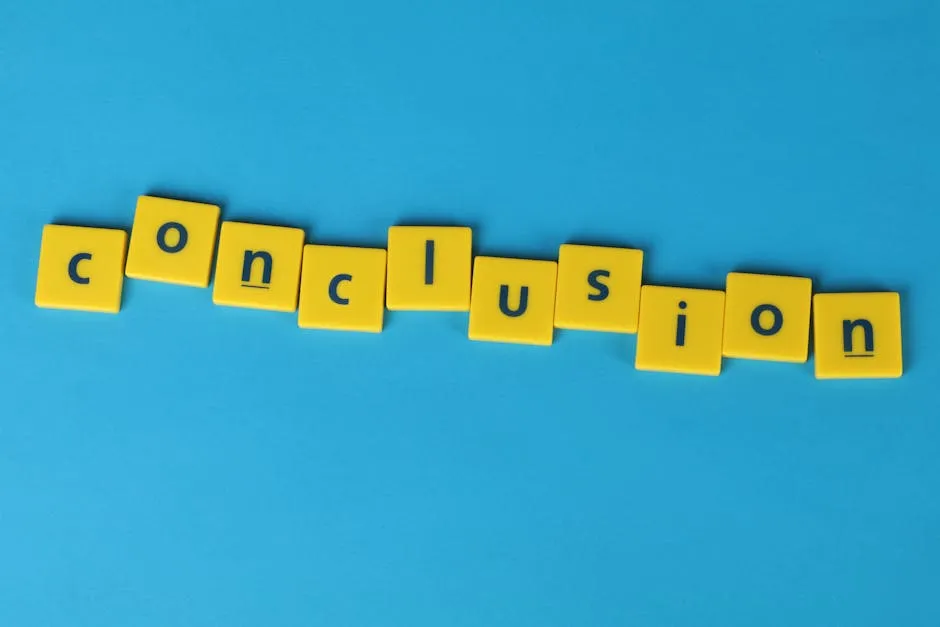Introduction
Bayesian statistics is a fascinating field that allows us to make informed decisions based on uncertainty. Unlike traditional methods, it embraces prior knowledge and updates beliefs with new evidence. This approach isn’t just important for statisticians; it’s vital for anyone who makes decisions based on data analysis. Think about it: from medical diagnoses to marketing strategies, Bayesian statistics is everywhere! Will Kurt’s book, Bayesian Statistics the Fun Way, takes a unique approach to explaining these concepts. Instead of heavy equations and dry examples, Kurt uses engaging scenarios from popular culture. Imagine analyzing the odds of Han Solo surviving an asteroid field! By connecting statistics to things we love, Kurt makes learning more enjoyable and accessible. The goal of this article is simple: to explore Bayesian statistics in a way that feels less like homework and more like a fun puzzle. We’ll break down the essential concepts and sprinkle in some humor along the way. Ready to turn the world of data analysis into a delightful experience? Let’s dive in!
Section 1: Understanding Bayesian Statistics
What is Bayesian Statistics?
At its core, Bayesian statistics is all about updating our beliefs in light of new evidence. It begins with a prior probability, which represents our initial belief about a situation. Then, through the magic of Bayes’ theorem, we adjust this belief based on new data, leading us to a posterior probability. So, if you thought UFOs were just myths, but then you find a crop circle, your belief might change! Now, let’s compare this with frequentist statistics. Frequentist methods often focus on long-term frequency and rely heavily on p-values. In contrast, Bayesian statistics allows for a more flexible and intuitive approach. It embraces uncertainty rather than shying away from it, making it perfect for real-world decision-making.Key Concepts of Bayesian Statistics
To grasp Bayesian statistics, we need to familiarize ourselves with a few key terms:- Prior Probability: This is your starting point. It reflects your initial beliefs about an event before seeing any new data. Think of it as your gut feeling.
- Likelihood: This term represents the probability of observing the new evidence given your prior belief. It’s like asking, “If I’m right, how likely is it that I’d see this data?”
- Posterior Probability: After updating your prior belief with new evidence, you arrive at this value. It’s your revised opinion, taking into account everything you’ve learned.
Bayesian statistics isn’t just a dry topic; it’s a toolkit for navigating uncertainty in everyday life. Whether you’re analyzing data for a business or making personal decisions, these concepts empower you to approach problems with confidence. Now, let’s keep this momentum going and see how we can engage with these ideas through fun examples!Understanding likelihood is essential in Bayesian statistics. Learn more about the asymptotic distribution of likelihood ratio test statistic.

Section 2: Engaging with Examples
Popular Culture References in Bayesian Statistics
Bayesian statistics isn’t just a dry subject reserved for mathematicians. With a sprinkle of creativity, it can morph into something engaging! Let’s take a look at how popular culture can help us understand these concepts better. Star Wars: Imagine Han Solo navigating through an asteroid field. What are his survival chances? Using Bayesian statistics, we can analyze data from past missions. Suppose we know that 80% of pilots like Han survived asteroid fields. If we gather new evidence—like Han’s cockpit skills—we can update our belief about his odds of survival. It’s like the Force, guiding us through uncertainty! And speaking of Star Wars, why not enjoy the entire saga? You can grab Star Wars: The Complete Saga [Blu-ray] for the ultimate movie night! LEGO: Now, let’s shift gears to LEGO! These colorful bricks are perfect for illustrating probabilities. Picture a LEGO model representing different outcomes. Each brick color could symbolize a different likelihood of an event occurring. When you combine them, you visualize probability distributions! Want to see how likely it is to build a specific structure? Stack those bricks and calculate the odds! Plus, if you’re looking for a creative outlet, check out the LEGO Classic Large Creative Brick Box to unleash your inner architect! Rubber Ducks: Yes, you read that right! Rubber ducks can be a playful way to visualize data. Conduct a fun experiment where you toss rubber ducks into a pool and note how many float versus how many sink. Use this data to discuss likelihood and prior beliefs. The more ducks you toss, the clearer the picture becomes! This simple exercise demystifies data analysis, making it accessible and enjoyable. And hey, if you’re looking for a charming bath toy, don’t miss out on the Rubber Duck Bath Toy—perfect for a relaxing soak!Real-World Applications of Bayesian Statistics
Bayesian statistics isn’t just for the realm of imagination; it has real-world applications across various fields. Here are some noteworthy examples:- Medicine: In healthcare, Bayesian methods help in diagnosis. Doctors can use prior probabilities based on patient history. If a patient presents symptoms, the likelihood of different diseases can change with test results. This process leads to more accurate diagnoses and better treatment plans. For a comprehensive guide on statistics in medicine, check out our post on family medicine shelf statistics.
- Marketing: Companies use Bayesian statistics to analyze consumer behavior. By evaluating past purchase data, businesses can predict future buying patterns. This approach allows marketers to tailor campaigns effectively, ensuring they hit the right audience with the right message at the right time.
- Criminal Justice: In the legal system, Bayesian statistics can aid in decision-making. For instance, juries can reassess the likelihood of guilt based on new evidence. This method promotes a more nuanced understanding of cases, making it a vital tool for judges and lawyers.
In each of these fields, Bayesian statistics provides a framework for making informed decisions in the face of uncertainty. By updating beliefs with new evidence, we can navigate complexities in a structured way. So, whether it’s deciding Han Solo’s fate or analyzing market trends, Bayesian statistics proves to be as versatile as it is powerful!Bayesian statistics has significant applications in fields like healthcare. Discover more about family medicine shelf statistics.

Section 3: The Structure of the Book
Overview of Chapters and Content
Bayesian Statistics the Fun Way is cleverly organized to guide readers through the whimsical world of Bayesian statistics. The book begins with a friendly introduction, welcoming readers into the realm of probability and its importance. It sets the stage for understanding how Bayesian thinking can transform our approach to data analysis. The structure unfolds into four main parts:- Introduction to Probability: Here, Kurt introduces the basic concepts of probability. Think of it as setting the foundation for your statistical house. Chapters cover essential topics like measuring uncertainty and the logic behind probability.
- Bayesian Probability and Prior Probabilities: In this section, the author dives into the heart of Bayesian theory. Readers explore conditional probabilities and Bayes’ theorem. The playful use of LEGO in chapter exercises brings a tactile element to understanding complex ideas.
- Parameter Estimation: This part focuses on estimating parameters and understanding distributions. Kurt simplifies complicated concepts, making them relatable and easy to grasp. By utilizing engaging examples, he ensures that readers are not left scratching their heads.
- Hypothesis Testing: The final section tackles hypothesis testing, a crucial aspect of statistics. It introduces readers to Bayesian reasoning through A/B testing scenarios. Each chapter crescendos into a satisfying revelation, reinforcing the learning experience. For a more comprehensive understanding of hypothesis testing, see our statistics hypothesis testing cheat sheet.
The book also features appendices that provide additional resources. These include a crash course in R programming, which is essential for readers eager to apply their newfound knowledge practically.Hypothesis testing is a crucial aspect of statistics. Explore our comprehensive guide on hypothesis testing.

Tools and Techniques
One of the standout features of this book is its integration of R programming. R is a powerful tool for statistical analysis and visualization. Kurt’s focus on R ensures readers can apply Bayesian methods to real-world data. The coding snippets are designed for beginners, making the learning curve less intimidating. Each chapter includes exercises that reinforce the concepts discussed. These exercises vary in complexity, allowing readers to gradually build their confidence. Whether it’s solving simple probability problems or applying Bayes’ theorem to complex scenarios, the exercises cater to all skill levels. Kurt’s exercises often involve fun, relatable examples. For instance, readers might calculate the odds of a rubber duck floating or explore the probabilities surrounding a UFO sighting. This approach not only makes learning enjoyable but also locks in the concepts for practical application. The combination of R programming and engaging exercises ensures that readers walk away not just with theoretical knowledge but also the practical skills to analyze data effectively. By the end of the book, they will feel equipped to tackle real-world challenges using Bayesian statistics, making it a truly fun way to learn!
Section 4: Learning Bayesian Statistics the Fun Way
Strategies for Beginners
Starting with Bayesian statistics might feel overwhelming. Fear not! Kurt’s book is like a friendly guide through the data jungle. First, embrace the basics. Don’t jump into the deep end without knowing how to float. A solid grasp of foundational concepts is essential. Kurt emphasizes understanding probability before tackling Bayesian methods. Begin with chapters that lay out the groundwork. Concepts like prior probabilities and likelihoods need to be clear. Think of them as puzzle pieces that fit together to form the bigger picture. Once you understand these pieces, the larger concepts become less daunting. Next, engage with the book’s playful examples. If you’re scratching your head over Bayes’ theorem, imagine Han Solo dodging asteroids. This vivid imagery makes complex ideas relatable and easier to digest. Finally, take your time! Learning should be fun, not a race. Work through each chapter at your own pace. Don’t hesitate to revisit earlier sections if you feel lost. Curiosity is your best friend here!
Enhancing Engagement and Retention
Learning Bayesian statistics doesn’t have to be a slog through dry equations. Spice it up! One way to do this is through gamification. Who doesn’t love a good game? Create quizzes based on the concepts you’re learning. Challenge friends to see who can solve Bayesian problems faster. Incorporate real-life scenarios into your study. Picture yourself as a detective analyzing probabilities in a crime scene. How likely is it that the suspect is guilty based on the evidence? This approach keeps your brain engaged and helps solidify concepts. Hands-on practice is critical for retention. Don’t just read; apply what you learn! Use R programming to analyze data sets. The book provides exercises that allow you to practice directly. This active engagement helps reinforce your understanding and makes learning feel like a fun challenge rather than a chore. Remember, the more you practice problem-solving, the more confident you’ll become. Embrace the joy of discovery as you tackle real-world problems with Bayesian statistics.
Common Mistakes to Avoid
As with any learning journey, there are pitfalls to avoid. One common mistake is neglecting the foundational concepts. Skipping the basics might seem tempting, but it leads to confusion later. Ensure you fully grasp prior probabilities, likelihoods, and Bayes’ theorem before moving on. Another misstep is overcomplicating the models. It’s easy to get lost in complex equations and forget the core ideas. Focus on understanding the relationships between concepts instead of getting bogged down in technical details. Misinterpreting results is a frequent error, too. Bayesian statistics emphasizes the importance of updating beliefs based on new evidence. Ensure you thoroughly assess how new data impacts your prior beliefs. Lastly, don’t hesitate to seek help. Whether from online forums or study groups, collaboration can clarify doubts. Learning Bayesian statistics is a community effort, and sharing insights can enhance understanding. By steering clear of these common mistakes, you’ll set yourself up for a successful and enjoyable learning experience. Embrace the fun side of Bayesian statistics, and watch your confidence soar!
Section 5: Reviews and Critiques
Summary of Reviews
Bayesian Statistics the Fun Way, authored by Will Kurt, has garnered a solid reputation among readers and critics alike. With an impressive average rating of 4.6 stars from over 550 reviews, the book is celebrated for its engaging narrative and clarity. Many reviewers praise Kurt’s ability to transform complex statistical concepts into digestible bites, appealing to both beginners and seasoned readers. One enthusiastic review from Inside Big Data describes it as “an excellent introduction to subjects critical to all data scientists.” Readers frequently highlight the book’s unique and relatable examples, such as analyzing Han Solo’s chances of surviving asteroid fields or the probability of UFOs landing in backyards. Such scenarios not only make learning statistics enjoyable but also enhance comprehension. Moreover, the writing style is often noted for being smooth and light, allowing readers to progress quickly through the material. However, constructive criticism does exist. Some reviews mention that while the examples are entertaining, they occasionally distract from the mathematical rigor underlying Bayesian statistics. A few readers expressed a desire for deeper explanations of certain foundational concepts, like combinatorics, which can enhance understanding. Others noted that while the book excels in engaging storytelling, it sometimes glosses over complex topics that could benefit from more thorough exploration.
Conclusion from Reviews
Overall, the consensus on Bayesian Statistics the Fun Way is overwhelmingly positive. Readers appreciate its effectiveness as a learning tool, particularly for those who might feel intimidated by traditional statistics. The blend of humor and practical examples has made Bayesian statistics accessible to a wider audience. While minor areas for improvement exist, the book stands out as a unique and valuable resource for anyone looking to grasp the principles of Bayesian statistics without the usual headaches associated with mathematical texts. Kurt’s work not only demystifies this essential field but also fosters a newfound appreciation for the role of statistics in our everyday lives. The fun approach, combined with thorough explanations, makes it a recommended read for both novices and those eager to refresh their statistical knowledge. With this book, readers can confidently embark on their journey into the world of Bayesian statistics, armed with the knowledge and skills to analyze data effectively and enjoyably.
All images from Pexels




